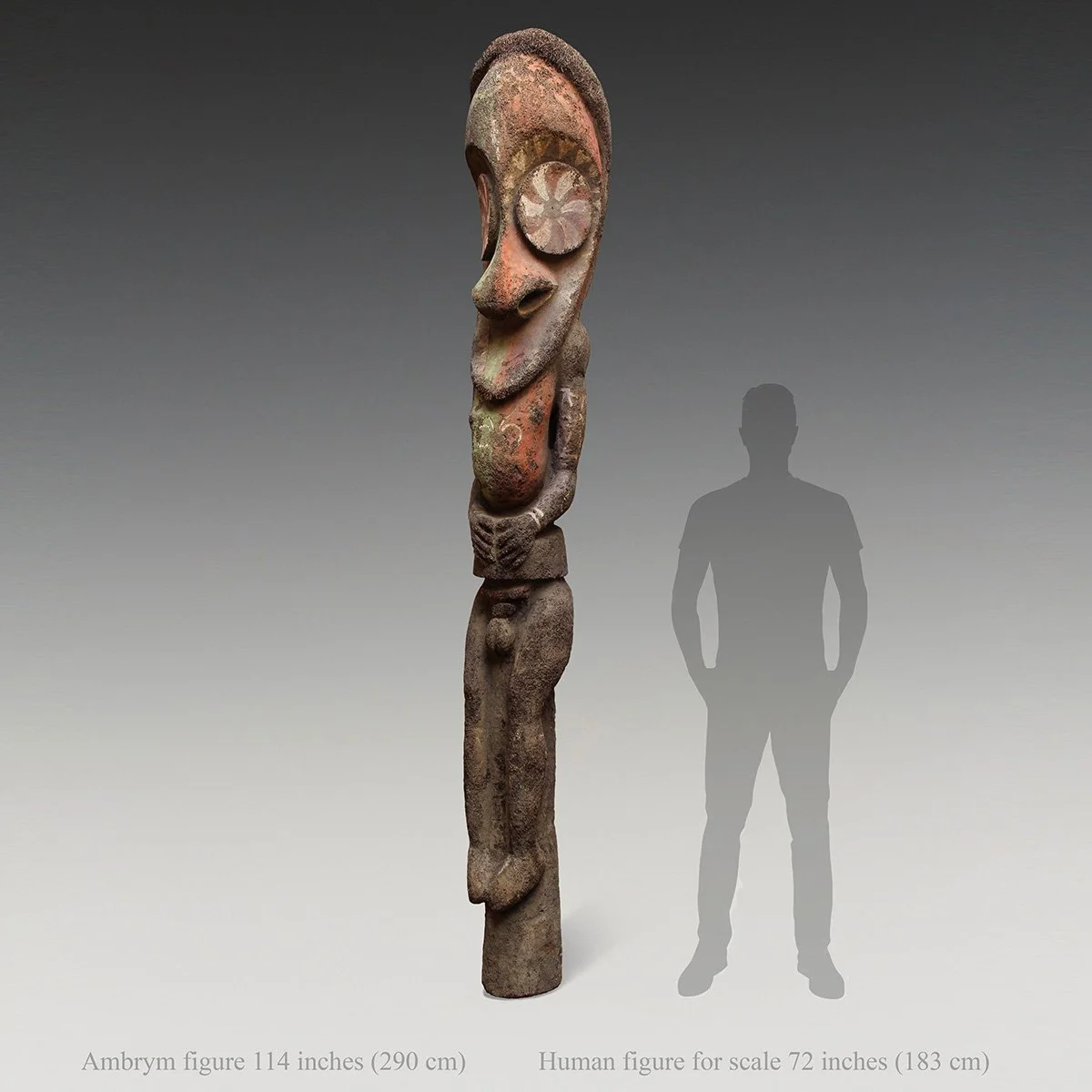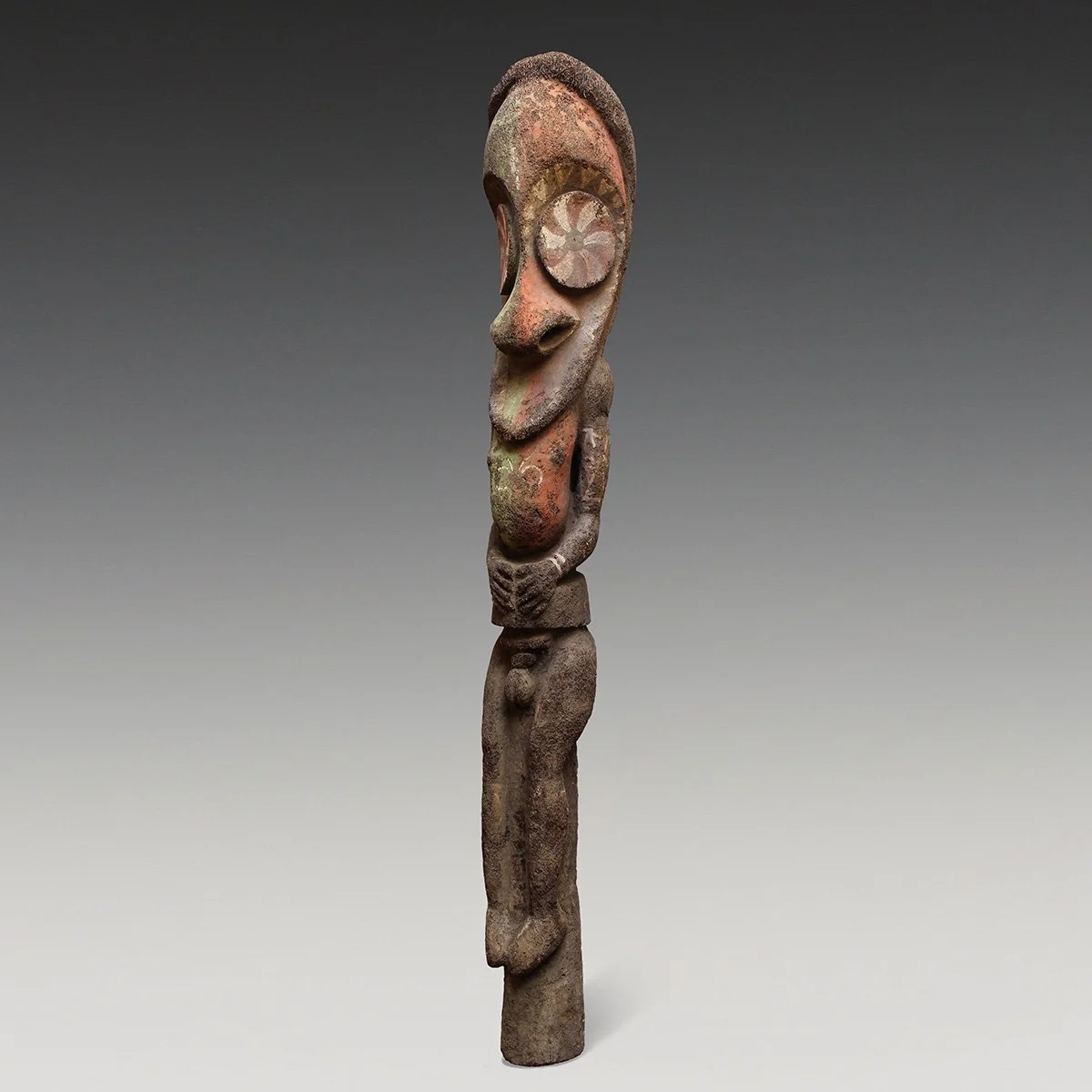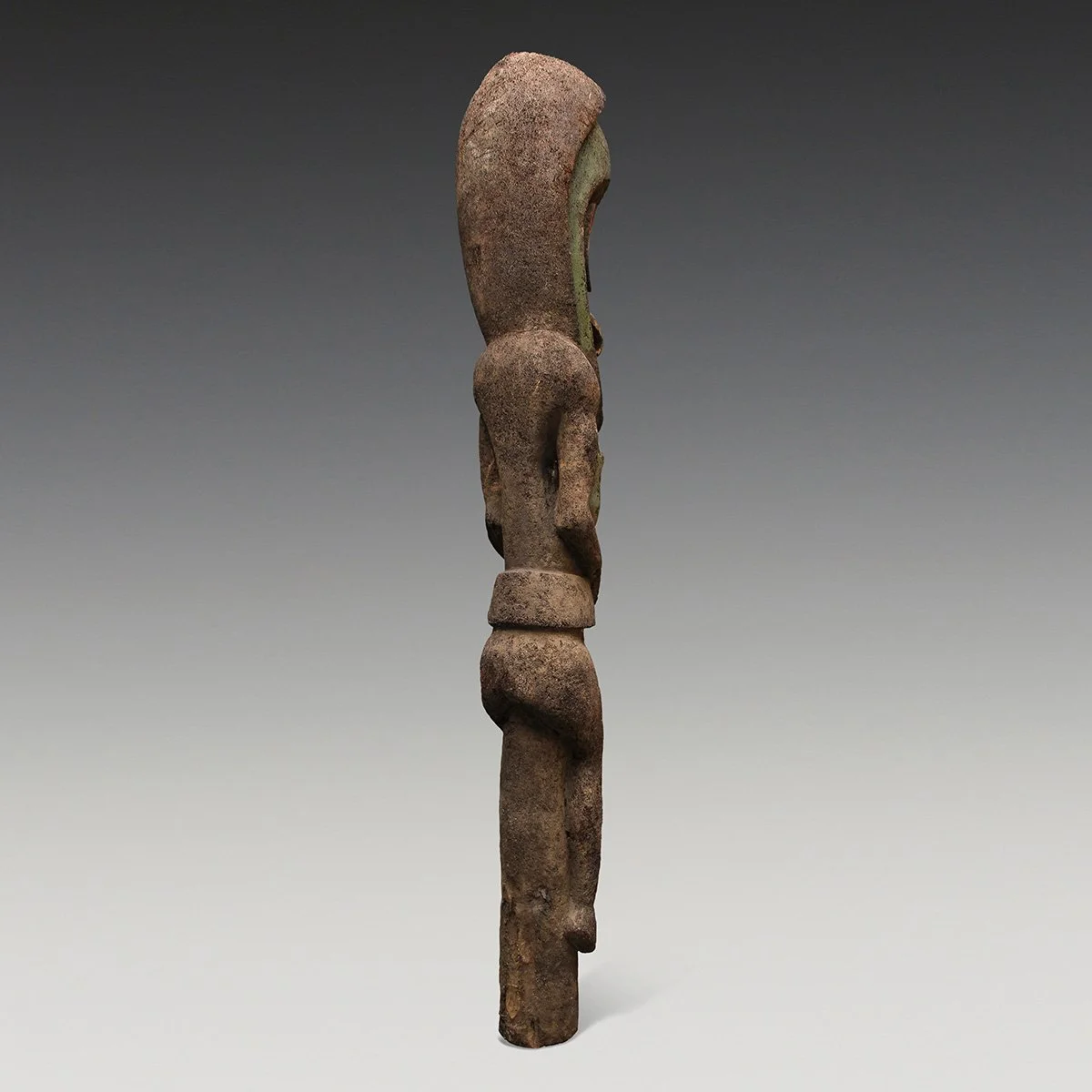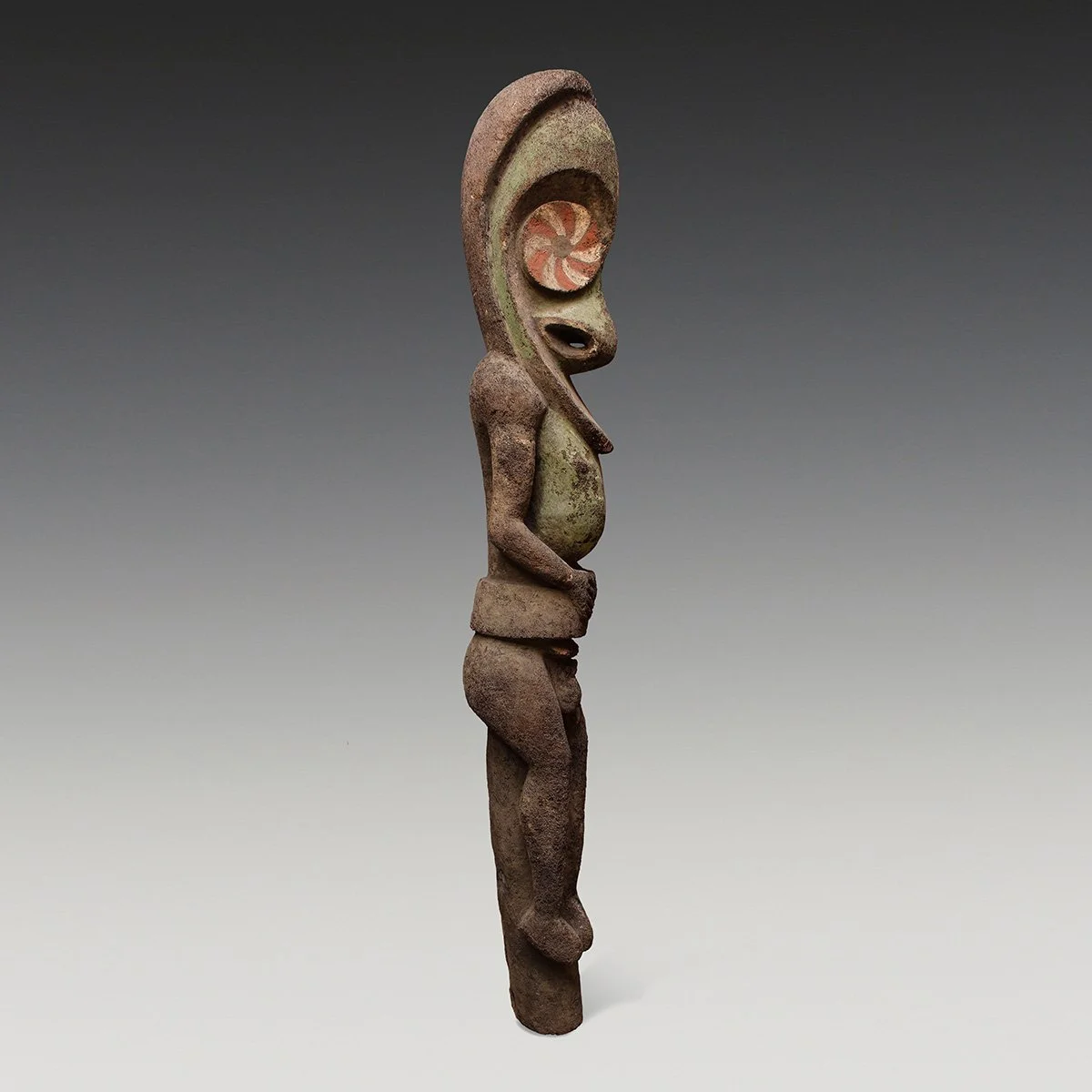 Image 1 of 9
Image 1 of 9

 Image 2 of 9
Image 2 of 9

 Image 3 of 9
Image 3 of 9

 Image 4 of 9
Image 4 of 9

 Image 5 of 9
Image 5 of 9

 Image 6 of 9
Image 6 of 9

 Image 7 of 9
Image 7 of 9

 Image 8 of 9
Image 8 of 9

 Image 9 of 9
Image 9 of 9










Important Maghe Grade Society Figure
Ambrym Island, Vanuatu
Early to mid-20th century
Height 114 inches
Weight 250 pounds including custom metal base
Provenance: Acquired in the 1970s from Nicolai Michoutouchkine - Noumea, New Caledonia
Wayne Heathcote – Miami and UK
Texas private collection
On the island of Ambrym, large figurative sculptures carved from the fibrous trunk of tree ferns were created as part of a complex series of hierarchical grade rituals, known locally as maghe. These rituals permitted an individual to progress through a succession of ranks, each of which conferred increasing social status, religious knowledge, and most crucially, equivalent rank in the afterlife. Initiates would employ skilled carvers to create grade society figures from tree fern that were specific to the initiates’ individual grade; with the highest-ranking grades being represented by monumental grade figures rendered in complete bodily form. Upon completion of the carving, the figure would then be covered with a paste comprised of the sap of the breadfruit tree, mixed with earth and ash; providing a smooth and durable undercoating on which to apply colorful painted designs.
The grade figure presented here is powerfully carved and features large disc eyes that are painted with alternating red and white spiral motifs symbolizing meten galgal – the morning star, lending a supernatural presence to the sculpture. The face is framed with a series of abstracted black and white triangular motifs that represent hingiye or facial hair, and the body and face are boldly painted with opposing red and green mineral pigments. The colors on this figure remain bright and intact as grade society figures of high rank were erected and displayed beneath a towering, partially enclosed dance platform that helped protect and preserve the applied pigments. At the culmination of the grade taking ceremony, the initiate would exit the large ceremonial dance and ascend this platform and dance in triumph above the displayed grade figure. With the ceremony concluded, the grade figure would remain to stand for many decades as a visual testament to the rank of its owner, and to serve as the fixed dwelling for the living ancestral spirits.
* Due to size and nature of item please contact us on shipping.
Ambrym Island, Vanuatu
Early to mid-20th century
Height 114 inches
Weight 250 pounds including custom metal base
Provenance: Acquired in the 1970s from Nicolai Michoutouchkine - Noumea, New Caledonia
Wayne Heathcote – Miami and UK
Texas private collection
On the island of Ambrym, large figurative sculptures carved from the fibrous trunk of tree ferns were created as part of a complex series of hierarchical grade rituals, known locally as maghe. These rituals permitted an individual to progress through a succession of ranks, each of which conferred increasing social status, religious knowledge, and most crucially, equivalent rank in the afterlife. Initiates would employ skilled carvers to create grade society figures from tree fern that were specific to the initiates’ individual grade; with the highest-ranking grades being represented by monumental grade figures rendered in complete bodily form. Upon completion of the carving, the figure would then be covered with a paste comprised of the sap of the breadfruit tree, mixed with earth and ash; providing a smooth and durable undercoating on which to apply colorful painted designs.
The grade figure presented here is powerfully carved and features large disc eyes that are painted with alternating red and white spiral motifs symbolizing meten galgal – the morning star, lending a supernatural presence to the sculpture. The face is framed with a series of abstracted black and white triangular motifs that represent hingiye or facial hair, and the body and face are boldly painted with opposing red and green mineral pigments. The colors on this figure remain bright and intact as grade society figures of high rank were erected and displayed beneath a towering, partially enclosed dance platform that helped protect and preserve the applied pigments. At the culmination of the grade taking ceremony, the initiate would exit the large ceremonial dance and ascend this platform and dance in triumph above the displayed grade figure. With the ceremony concluded, the grade figure would remain to stand for many decades as a visual testament to the rank of its owner, and to serve as the fixed dwelling for the living ancestral spirits.
* Due to size and nature of item please contact us on shipping.

